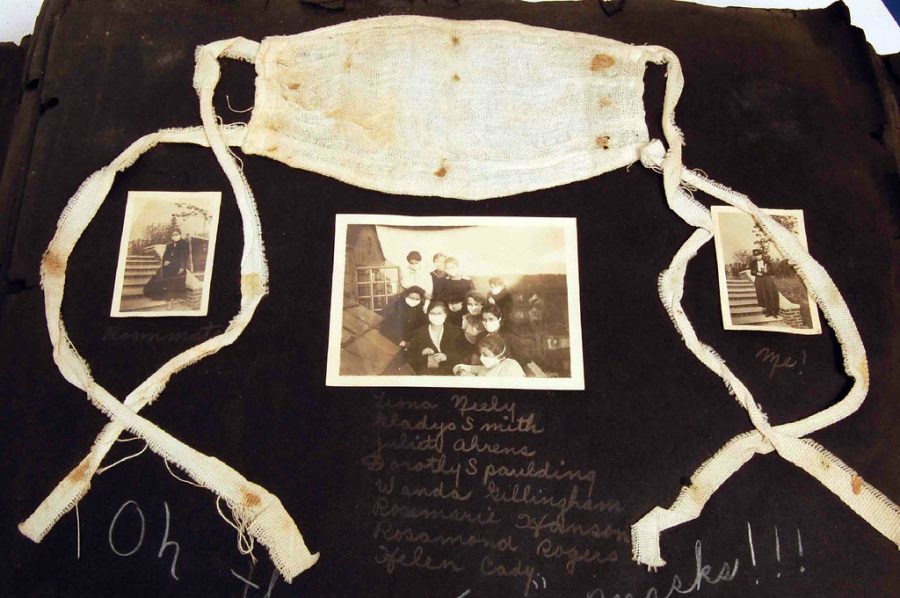How Much Has Really Changed in 100 Years: Comparing the 1918 Influenza and Coronavirus
February 5, 2021
The Coronavirus is not the first pandemic that the United States has gone through. In 1918, the “Spanish Flu” or the 1918 influenza pandemic took its toll. The United States has handled the two pandemics in similar ways, while also handling it differently in some cases. Both of the pandemics are “novel,” which means both viruses have never been seen before and no one has any immunity.
Similarities between pandemics
Both of the pandemics are similar to an influenza-like illness. The symptoms for both include but aren’t limited too: muscle aches, headaches, and respiratory illness.
The ways of how both pandemics handled to lessen the cases are also similar, including social distancing, isolation, quarantine, good personal hygiene, disinfectants, and limiting large gatherings.
Both of the pandemics showed up in the United States prior to being labelled as a pandemic, in 1917 and 2019.
For more information, you can visit the CDC, or health.com.
1918 Influenza
“Gauze mask worn by University of Michigan students during 1918 Influenza pandemic.” by In Memoriam: Wystan is licensed with CC BY-SA 2.0. To view a copy of this license, visit https://creativecommons.org/licenses/by-sa/2.0/
During the 1918 Influenza pandemic, these were one of the kinds of masks the students at University of Michigan wore.
The 1918 influenza pandemic was the H1N1 virus with genes of avian origin.
Differences
Origination
Originated in birds.
Mortality Rate
The mortality rate was higher for healthy people in the 20-40 year age group, unique to this pandemic.
Waves
Lasted two years and occurred in three waves.
Case Rates
500 million people or one-third of the world’s population was infected, which 50 million people worldwide died. 675,000 deaths in the United States.
Vaccine
The vaccine was not available until after the pandemic ended, developed in 1942.
The end
The pandemic ended when the virus had circulated the globe, infecting enough of the world population, which is called herd immunity.
St. Louis
St. Louis handled the 1918 pandemic exceptionally well. Social distancing measures were put in place and followed. This kept a low death rate throughout.
How the measures were enforced
The measures were enforced differently across the states. In San Francisco, a health officer shot three people when they refused to wear a face mask. Arizona police handed out fines to those who refused to wear a face mask. Otherwise strict measures were just set in place.
Coronavirus
While there are a variety of different masks that people wear, these disposable surgical masks are one of the most popular choices.
The COVID-19 pandemic is formally known as SARS-CoV-2.
Differences
Origination
Originated most likely from a bat.
The first case was first identified in Wuhan, China in December of 2019.
Mortality Rate
The 2019 pandemic mortality rate is higher for people 85 years and older.
People with pre-existing health conditions also have a higher mortality rate.
Waves
COVID-19 has lasted for almost a year with three waves.
Case Rates
According to the World Health Organization, as of February 5, there have been 104,370,550 confirmed cases of COVID-19 globally, including 2,271,180 deaths.
According to the CDC, as of February 4, there have been 26,398,337 total cases in the United States, and 449,020 deaths.
Vaccine
A vaccine has started to be produced and released by Pfizer and Moderna.


